
Introduction
There’s no denying the allure of a fire pit—it’s the perfect blend of comfort and primal fascination. Its warmth invites conversations, the flickering flames mesmerize, and the smoky aroma adds an exciting edge to outdoor grilling. But, as with all things fire-related, safety is paramount.
The rising popularity of fire pits, whether for roasting marshmallows in the backyard or cooking a full meal during a camping trip, comes with a responsibility. It’s critical to understand the precautions needed to ensure everyone’s safety and the preservation of our surroundings.
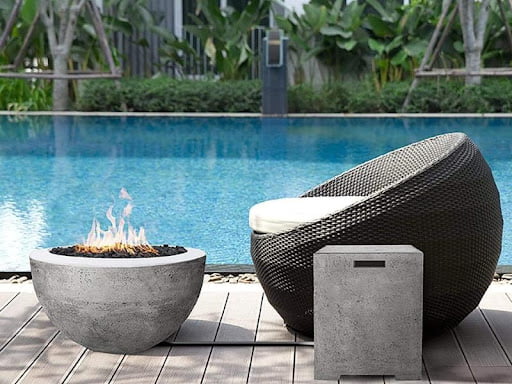
Choosing the Right Location for Your Fire Pit
Location is a key factor in fire pit safety. The spot you choose can mean the difference between a fun-filled evening and a frantic call to the fire department. Here are a few tips on picking the safest location.
Your fire pit should be at least 10 feet away from your home, shed, fence, or any other structure. This reduces the chance of sparks igniting something unintentionally. It’s also important to check overhead—low-hanging branches or decorations are potential fire hazards.
It’s not just about distance, though. The surface plays a significant role as well. Place your fire pit on a non-flammable surface, such as stone, concrete, or brick. Wooden decks or grass can easily catch fire, so they’re a no-go unless you use a protective layer or a specially designed fire pit pad.
Remember, using a fire pit involves respect—for fire, safety rules, and the environment. Choose your fire pit’s location wisely, and you’ll be well on your way to a safe and enjoyable experience.
Safe Fire Pit Installation and Setup
Installation and setup are just as critical as location in ensuring fire pit safety. The process varies based on the type of fire pit, so let’s delve into some guidelines for safe installation and setup.
Wood-Burning Fire Pits
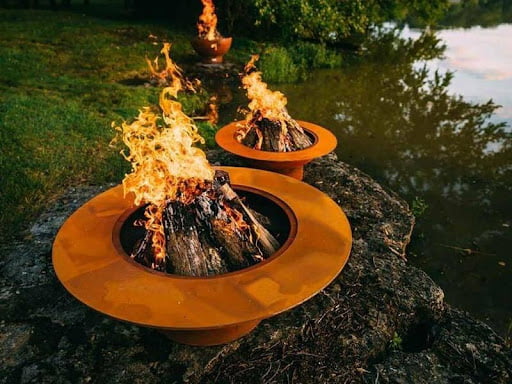
These traditional fire pits are easy to set up. They should have a solid base of sand or gravel to help distribute heat and prevent ground scorching. When burning wood, only use dry, seasoned wood to minimize sparking.
Gas Fire Pits
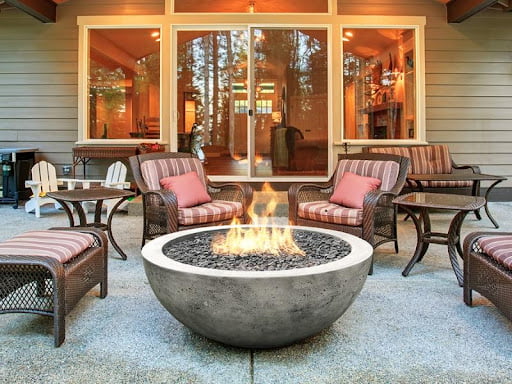
Setting up a gas fire pit is more complex and often requires professional installation. If it’s propane-based, make sure the tank is stored safely and the connection is secure. If it’s natural gas, it’ll need a permanent gas line, which should be installed by a professional.
Gel Fuel Fire Pits
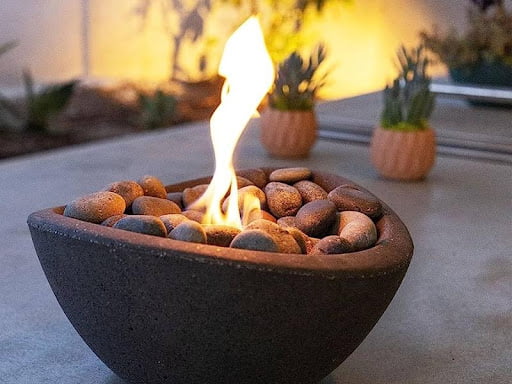
These are the easiest to set up as they run on cans of gel fuel. Simply place the can in the fire pit and light it. Be sure to let the can cool before removing or replacing it.
Portable Fire Pits
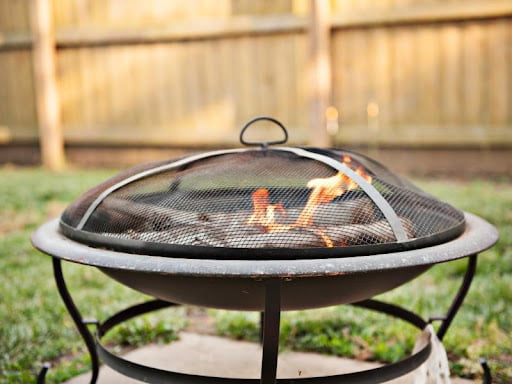
Portable fire pits need to be set up on a solid, level surface to prevent tipping. They should also have a spark screen to contain any flying embers.
Across all types, make sure your fire pit is sturdy and stable before use. It’s also a good idea to have a fire extinguisher or a bucket of sand nearby for emergencies. With careful setup and mindfulness, fire pits can offer warmth and ambiance without risking safety.
Safe Operation and Usage
Proper operation is key to enjoying your fire pit safely. Here’s how to keep your fire pit experience enjoyable and hazard-free.
Lighting the Fire Pit
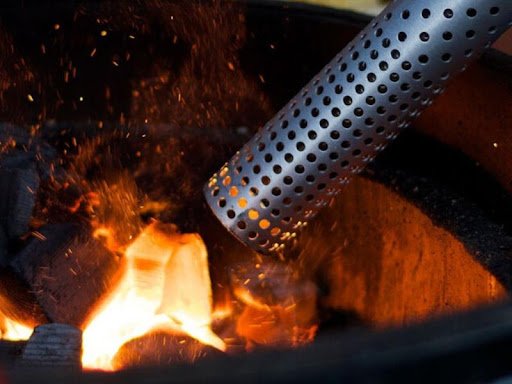
Start by using small sticks and dry leaves or fire starters, then add larger pieces of wood as the fire grows. Never use gasoline or lighter fluid to start a fire—they can cause uncontrollable flames.
Never Leave it Unattended
An unattended fire pit is a potential disaster. Always keep an eye on it, and ensure it’s fully extinguished before leaving or going to sleep.
Safe Cooking Practices
If you’re using your fire pit for cooking, use heat-resistant cooking equipment and utensils. Never leave food unattended on the fire pit—it can quickly overheat and cause a fire.
Extinguishing Your Fire Pit
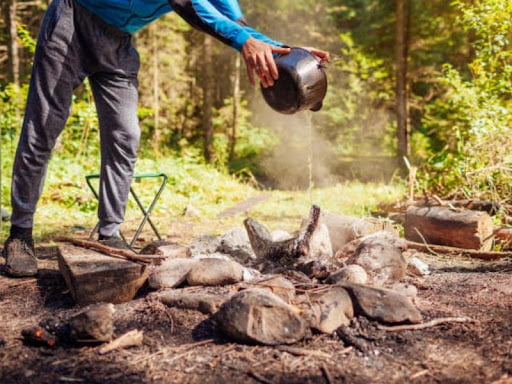
Let the wood burn completely to ash if possible. Then, slowly pour water over the ashes and stir them to ensure all embers are out. If you’re using a gas fire pit, simply turn off the gas supply.
Maintenance and Cleaning
Regular maintenance is crucial for fire pit safety and longevity. Here’s a step-by-step guide on how to clean a fire pit.
- Wait until the fire pit is completely cool.
- Remove any large debris by hand.
- Scoop out ashes and small debris using a metal shovel or scoop.
- Use a shop vac or broom to remove any remaining ashes.
- Check for damage or wear, such as rust or cracks, and repair or replace if necessary.
- Cover the fire pit when not in use to protect it from the elements.
Maintenance and cleaning are not just about aesthetics—they’re about safety. A well-maintained fire pit is a safe fire pit. So, take the time to clean and maintain your fire pit after every use.
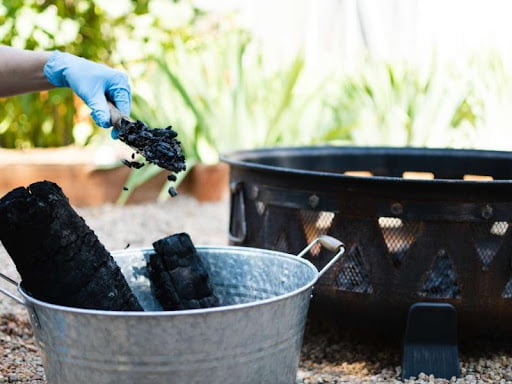
Emergency Preparedness
Even with all precautions, accidents can still happen. That’s why emergency preparedness is an essential part of fire pit safety.
Fire Safety Kit
It’s a good idea to have a fire safety kit nearby when using your fire pit. This kit should include items like a fire blanket, first aid supplies, and burn cream. Having these supplies on hand means you’re ready to respond if an accident happens.
Fire Extinguisher
A fire extinguisher is a non-negotiable when it comes to fire pit safety. Make sure it’s easily accessible and that everyone present knows how to use it. Remember, the rule of thumb for using a fire extinguisher is PASS: Pull the pin, Aim at the base of the fire, Squeeze the handle, and Sweep side to side.
Bucket of Water
In addition to a fire extinguisher, it’s smart to have a bucket of water nearby. You can use it to douse the fire at the end of the night or to handle any flare-ups that occur.
Emergency Procedures
Everyone in your family or group should know what to do in case of a fire. This includes knowing how to use a fire extinguisher, who to call, and where the nearest hospital or emergency clinic is.
Preparedness is key in preventing minor incidents from escalating into major emergencies. So, arm yourself with the right tools and knowledge, and you’ll be able to enjoy your fire pit safely and with peace of mind.

Local Regulations and Considerations
Fire pit safety isn’t just about the user—it’s also about the community. That’s why familiarizing yourself with local fire codes and regulations is crucial.
These regulations vary by location, but they may dictate factors like the acceptable size of your fire pit, how far it needs to be from structures, when and where you can have a fire, and whether a permit is required.
Before setting up a fire pit, make sure you check with your local fire department or city office. You may also need to consider the season and current weather conditions, as many places prohibit outdoor fires during dry or windy conditions.
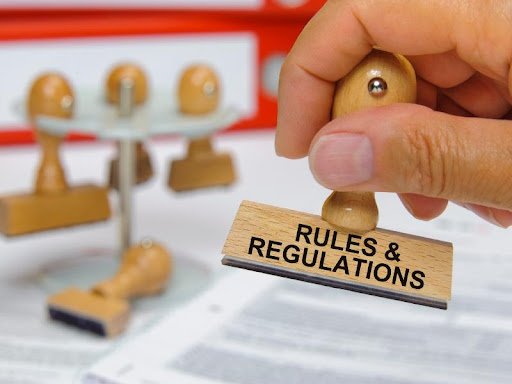
Conclusion
We’ve journeyed through the intricacies of fire pit safety, from selecting the ideal location and setting up correctly, to the importance of maintenance and the necessity of emergency preparedness. We’ve stressed the importance of abiding by local regulations and reminded you that no fire pit should be left unattended.
While fire pits can bring warmth, ambiance, and delicious food, remember that safety should always be your top priority. You’re not just ensuring your own safety, but also that of your family, neighbors, and the environment.
Armed with this knowledge, I encourage you to go forth and enjoy your fire pit responsibly. Let the mesmerizing flames add not just warmth and fun to your evenings, but also peace of mind, knowing you’re doing your part to prevent accidents and keep your home safe.
